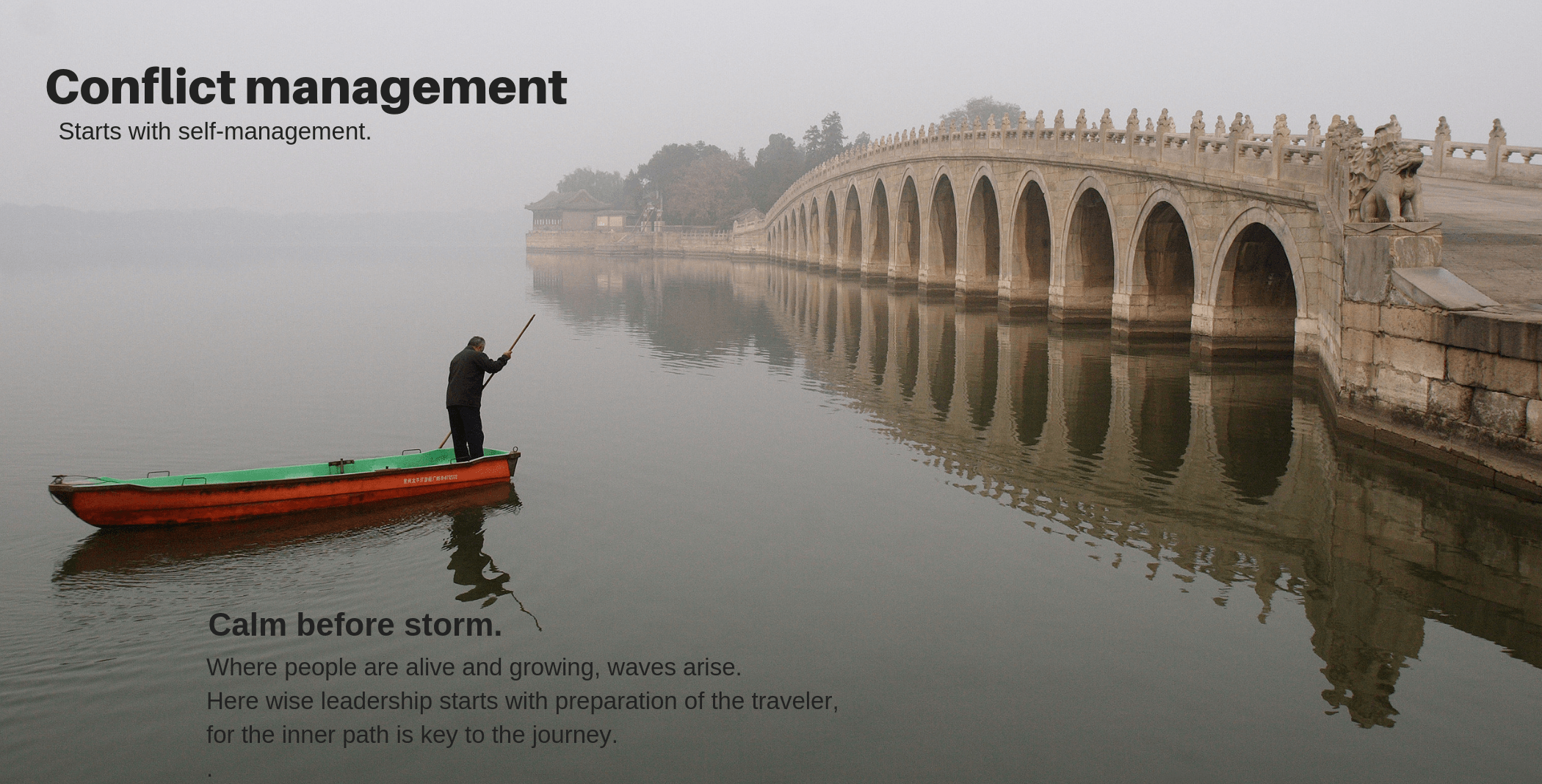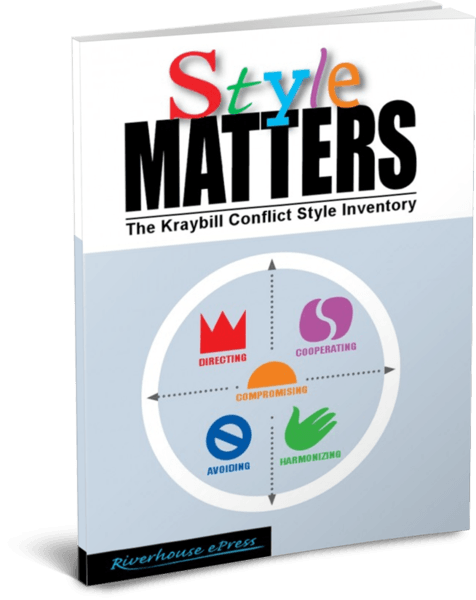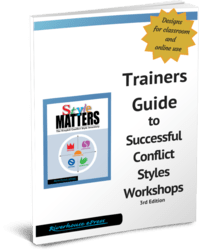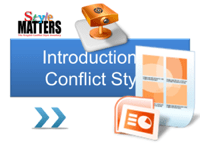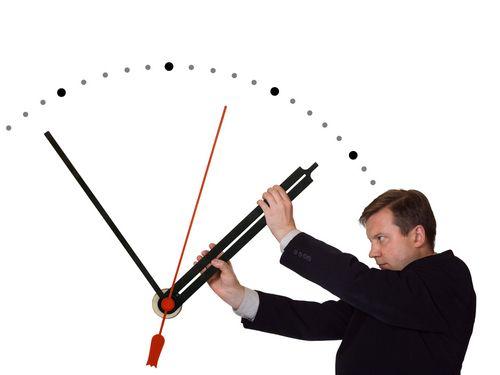Free Web Resources
on Conflict Resolution and Conflict Styles
This annotated bibliography cites essays related to conflict styles on a wide variety of topics including gender, culture, training, neurobiology, anger management and more. Send suggestions for additions to This email address is being protected from spambots. You need JavaScript enabled to view it.
General Info on Conflict Styles and Inventories
What is a conflict style inventory? This short introductory essay explains what conflict styles are and how knowledge of them helps in managing relationships.
In an audio presentation - Ron Kraybill, author of Style Matters, gives an overview of conflict styles and how to benefit from conflict style awareness in an interview with radio talk show host Meisha Rouser.
Which conflict style to use? This one-page summary will help you decide whether to confront or avoid conflict.
From the Program on Negotiation at Harvard, a blog with useful posts about negotiation skills. Yes, it is very "Fisherian", ie: in the tradition of Roger Fisher, co-author with Bill Ury of the best-selling negotiation primer Getting to Yes. That means there is a certain feeling in the essays that all negotiations are with Westernized urban professionals cutting deals over a boardroom table. If you're dealing with protracted identity based conflict or conflicts over fundamental issues of injustice or with people from collectivist societies, the offerings soon get a bit thin. That said, the Fisher and Ury tradition is excellent on certain fundamentals of negotiation and, especially if you operate in the corporate world, the PON is a good resource for basics.
Four page essay, "Addressing Conflict in the Family Business". Not extensive coverage but a decent intro. The last half of the essay draws on the Mouton Blake five style model used by the Thomas Kilmann and the Kraybill Conflict Style Inventories as a tool to suggest constructive responses.
Scholarly essay on conflict style inventories, "What Goes Around Comes Around: The Impact of Personal Conflict Style on Work Conflict and Stress", by Raymond Friedmann and Simon Tidd, in the International Journal of Conflict Resolution, Vol. 11, No. 1, 2000, pp32-55 . More than most people will want to know about conflict style inventories, but if you seek scholarly literature, with lots of references and some comparison among the inventories in use at the time of writing, here's a solid one.
Brief introductory essay to basic concepts of conflict style inventories, entitled "What is Your Conflict Style," from the Journal for Quality and Participation, Summer 2004, by Conerly, Keith, Tripathi, Arvind. The essay describes the five-style framework of conflict styles devised by Mouton and Blake in the 1960s, that underlies the most widely used conflict style inventories, including the Thomas Kilmann, the Jay Hall instrument, the Kraybill Conflict Style Inventory, and others.
This article examines use of the conflict style inventory as a tool in coaching people to improve their relationships. The essay is addressed to people working in higher education, but almost everything in it can be quite easily transposed to other settings. Of special interest to trainers will be the section which includes outlines of training sessions to train people in the conflict style inventory materials.
The Thomas Kilmann Conflict Mode Instrument
The Thomas Kilmann or TKI is the most widely used conflict style inventory and many trainers using Style Matters today started out with the Thomas Kilmann. Read an assessment of the TKI and reasons why Style Matters author Ron Kraybill eventually abandoned it and developed Style Matters here.
For a detailed comparison of Style Matters with the Thomas Kilmann Conflict Mode Instrument see this point-by-point comparison chart.
Here is an excellent introduction to the Thomas Kilmann Conflict Mode Instrument, addressed in particular to managers. Since the Thomas Kilmann is based on the same logical framework as the Style Matters inventory (namely, the Mouton Blake Grid) many concepts in this essay apply to both.
There's a summary of a study about conflict styles of medical residents in a hospital in this essay in the Journal of Graduate Medical Education. Other researchers might benefit from learning how the study was structured. Medical doctors, instructors of medical students, and HR people in hospitals might benefit from findings about which conflict styles were associated with best performance of medical residents.
The study found that residents who had high scores in the ACGME competencies (a standardardized battery of ratings widely used in medical schools associated with the Accreditation Council for Graduate Medical Education to evaluate the performance of residents) showed strong preferences for the Competing (same as Directing in Style Matters) and Cooperating conflict styles and low preferences for Avoiding and Accommodating (same as Harmonizing in Style Matters). Students with low scores in the ACGME competencies had scores reflecting opposite preferences.
This essay is also of interest from a psychometric standpoint, for the authors mention in passing that the test-retest reliability "ranges from 0.61 to 0.68". Given that .90 or above is considered a good score, and .70-.80 an acceptable score, this places the TKI below the minimum acceptable rating. So when people retake the TKI, their scores often vary significantly from the first time they took it.
Elsewhere the essay mentions "there are concerns about the alpha reliability of the TKI". That means there may not be consistency among the TKI questions in accurately measuring the same thing, another red flag from a psychometric standpoint. Given our bias at Style Matters towards optimizing for learning and classroom dynamics rather than psychometrics, that's not such a big deal. But for an inventory whose publisher has long promoted "rock solid metrics" as its number one quality, it's less than impressive.
Training in Conflict Styles
Get a free Trainer's Guide by Ron Kraybill for leading a conflict styles workshop. 40+ pages of step-by-step instructions guide you in leading conflict styles workshop your group will love. Keyed to Style Matters, but works fine with Thomas Kilmann as well. Download now. If you are leading a workshop for users who've taken the online version of Style Matters and have a printout of their score report in hand, be sure to also see this short workshop outline targeted to this particular situation. The 40 page guide is still useful, for it explains many concepts in detail, but the 5 page guide shows how to lead a workshop in reference to the digital printout.
See the section below, "Cooperating and Compromising as Conflict Styles". Many training resources can be found in references there.
YouTube.com has useful video resources for learning about conflict resolution and conflict styles. Here's a nicely done intro to the five styles, strong enough to use in a training workshop if a trainer wants support explaining the conceptual framework underlying the five styles. Though we find the "me/you" language of the opening minutes of this dramatized presentation of the five styles by co-trainers simplistic, a trainer might find find inspiration to do something similar in a workshop. Do a search on 'conflict styles" or "conflict resolution" on YouTube and you'll come up with enough hits to entertain yourself for an evening on the results.
A remarkable collection of quotes, cartoons, and stories about conflict and negotiation can be downloaded for free from the Program on Negotiations at Harvard. A full 61 pages by Joshua Weiss, PhD. It's really a treasure trove for trainers and writers on conflict and peacebuilding!
Example of how conflict resolution training is being used: Bus drivers in London trained in conflict resolutions skills? Yup. Trainers might find this a nice little example for the start of a workshop, to show how people in all walks of life benefit from preparation for dealing with conflicts.
The Program on Negotiation at Harvard has a decent short essay on working out conflict among work colleagues in their newsletter.
Culture and Conflict Styles
People from "high context" cultures give more weight to things like age, social roles, and expectations of bystanders in choosing how to respond to conflict than people from "low context" cultures. An essay on the Riverhouse site explains the difference between the two. See the section on culture in the free Trainers Guide (see beginning of training resources section above) for ideas on how to incorporate cultural awareness into conflict styles training.
The cultural dimensions of conflict management style are examined in this essay entitled: "Conflict management style: accounting for cross-national differences" by: Morris, Michael W.; Williams, Katherine Y. Leung, Kwok, and published in the: Journal of International Business Studies v. 29 no4 (1998) p. 729-47. This scholarly research essay focuses in particular on the use of avoiding and competing as responses to conflict in Asia and the U.S.
"Cross Cultural Conflict Resolution in Teams", by John Ford, gives an excellent over-view of cultural issues in teams. Ford is a veteran South African mediator/trainer now based in California. He writes with the authority of one who has spent a lifetime navigating cultural differences. He gives a nice summary of the differences between individualist versus collectivist cultures, pointing out that although in America the majority culture is individualistic in orientation, in places like California nearly half the population comes from cultural backgrounds that have strong collectivistic influences. Users of the Kraybill Conflict Style Inventory, which has users self-identify their own cultural background and gives differing instructions accordingly, may find this essay of particular interest.
Jon Sebastian has written a lengthy scholarly study called "The Intercultural Mediation Project, The Blere Project: A Study of Conflict Management in an Intercultural Context". Researchers used the Thomas Kilmann to study and compare conflict management practices among Germans, French and Americans. The study results were inconclusive but this is a good resource for people wanting to get up to speed on the literature related to conflict style management in general and crossculturally in particular. There's a nice comparison of individualistic versus collectivist cultural responses to conflict on page 9.
A Thai team of researchers surveyed 198 law students in Thailand regarding their conflict styles and sought to determine whether gender and age are factors in predicting their dominant styles. In their report, titled "Conflict Management Styles of Law Students in Thailand: A Study of Age and Gender", published in Journal of Global Business & Management, Vol. 1, No. 2, Fall 2010, authors Bahaudin G. Mujtaba, Chaowanee Chawavisit, and Pawinee Pattaratalwanichfind that Thais have a strong collaborative orientation and there is no significant difference between the conflict management styles of Thai law students based on gender and age. They suggest that the Buddhist teachings regarding Dukkha (suffering), Anicca (impermanence), and Anatta may have an influence on the Thai preference for a collaborative style.
This blog is about living in India, but much of its content would be useful to any outsider living or working in a High Context culture (see this essay on our site to understand the meaning of that). Blogger Neil Miller reflects insightfully on his experiences living as an expat in India in The Golden Rule for Choosing the Best Forms of Business Communication in India or Are All Indians Indirect? or How to Recover from Offending Someone in India. Not the usual yada-yada of do this/don't do that, Miller's writings suggest deep understanding of and appreciation for Indian culture. Worth a read even if you don't live in India
See the entry in the Avoiding section below for description of a fascinating video by a Japanese American social psychology professor at at Nagoya University, Japan, reflecting on the benefits of conflict avoidance, and how to do it skillfully.
Gender and Conflict Styles
A woman who heads a consulting firm and teaches negotiations blogs about her observation that women often seem to be reluctant to go after what they want in negotiations. She advises women to change their negotiation style to match the situation they are in. This concept lies, of course, at the heart of conflict style management and holds for men and women. Everyone benefits from an ability to confidently switch to a style that is assertive and persistent, when the situation calls for it.
Karen Korabik and Carol Watson write about their research on gender influences on conflict styles in their 1993 paper, "Managers' conflict management style and leadership effectiveness: The moderating effects of gender". Download from Academia.edu or here.
Another study on gender and conflict style, entitled, "A gender-based categorization for conflict resolution" by Sheryl D. Brahnam, Thomas M. Margavio, Michael A. Hignite, Tonya B. Barrier, Jerry M. Chin, suggests that women are more likely to use collaborative/cooperative strategies and men are more likely to avoid. Journal of Management Development, March, 2005, 197-208.
"Results of this study indicate that, when compared with their male counterparts, women are more likely to utilize a collaborative conflict resolution style and men are more likely to avoid conflict. As collaboration is generally considered more productive and avoidance more disruptive in the conflict resolution process, the study suggests that women may possess more effective conflict resolution attributes than their male counterparts." For more info.
"Predictors of women's workplace conflict management styles" is a PhD dissertation written by Gerald Dean Charbonneau, Wayne State University. The research sought to determine whether social characteristics such as feminism, race, age, single head of household status, religion, and social class explain differences in conflict management among women. Here is a brief summary of the dissertation.
"Lessons Learned of Mediation in Indian Country: Exploring and comparing transformative mediation process and theory and American Indian values and processes", by Kristine Paranica is an essay on the cultural dimensions of making peace among the Sioux, the Chippewa, and several smaller groups. The essay does not deal with use of conflict style inventories, but is a useful read for anyone interested in expanding their awareness of how culture shapes expectations of how to make peace.
Harmonizing as Conflict Style
"Give and Take: The Accommodating Style in Managing Conflict" by Dale Eilerman provides an indepth analysis of one of the five styles of conflict (called Harmonizing in the Kraybill Conflict Style Inventory). Eilerman draws on the Myers-Briggs to add additional insights to this style.
Avoiding as Conflict Style
For input on Avoiding as a response to conflict: A University of Wisconsin site offers a 3 minute video clip of a Harry Webne-Behrman, a facilitator/trainer, giving a lecture on barriers to negotiating in a cooperative style. He describes three categories of barriers: personal, interpersonal, and structural or systemic barriers. The lecturer says that because conflict is so uncomfortable, many people choose an avoiding response to conflict, leading to what he calls a "culture of avoidance." Training tip: A trainer could screen this clip in a workshop and ask people to share examples of these barriers in their own lives. Or a teacher might assign students to review the clip and come to class with such examples ready for discussion.
Here's an entire doctoral thesis on conflict avoidance: "Linking Goals to Avoidance in Interpersonal Conflict Situations: A Cognitive Approach" , by Qi Wang, who submitted this to the Graduate School of the University of Maryland, College Park, MD, in 2006. This is far too research-oriented to interest most trainers, but researchers may find the literature review useful, as well as the six varieties of of avoidance Wang identifies, summarized on pp. 167ff. Wang correctly points out that avoidance has received far less study than, say problem-solving, so her work marks an early effort to deepen scholarly understanding of avoidance as a strategy. Someone planning to spend a lot of time in a culture that relies heavily on avoidance may find sections of the thesis valuable to get a fine-grained appreciation of the art of avoidance.
This blog entry lists seven scholarly essays on the dynamics of avoidance and demands in marital relationships.
"Temporal distancing" is a technique for using your imagination to reduce the intensity of interacting with someone you find unbearable. Robert Sutton describes and illustrates it nicely in this short video clip. When you have to interact with someone very annoying or demanding, temporal distancing has you imagine that you are looking back at yourself from some point in the future when this is all past. Research has found, he claims, that doing this increases your ability to cope.
Jiro Takai, professor of social psychology at Nagoya University, Japan is a Japanese American who delivers a fascinating lecture on Youtube, "Rethinking Interpersonal Conflict Strategies: Is Avoiding really that Bad?" Taki reviews Avoiding in the Mouton Blake framework (the underlying framework of both the Thomas Kilmann and our Style Matters inventories, and reflects on the Japanese preference for it in interpersonal settings. He highlights its value as a conflict style and describes a variety of ways it is used skillfully. This is a stimulating and thoughtful set of reflections by a well-informed scholar with feet firmly planted in two very different cultures.
The "Silent Treatment" is a strategy of dealing with conflict that looks a little like avoidance. But at its core it is an aggressive and coercive strategy dressed up in passive behavior, designed to achieve a goal by inflicting the sharp pain of isolation on its target. As a response to conflict concerned only with the goals of the one using it, the Silent Treatment is best understood as an inescapably destructive form of Directing. Dr. Margaret Paul writes insightfully on coping with the Silent Treatment in a close relationship, urging self-care as a key defense.
Directing as Conflict Style
The title pretty much captures the topic of this blogpost, "A Constructive Way to Confront an Asshole". Bob Sutton tells an anecdote about confronting offensive behavior by respectfully but firmly telling the dramatist, “When you are rational enough to carry on this conversation without screaming I might be willing to listen, But I WILL NOT TOLERATE YOU TO SCREAM AT ME IN THIS ABUSIVE MANNER,” and then walking away. He describes a variety of other tactics,in "Latest Tips for Surviving Workplace Assholes".
Blogger/trainer Susan Shearouse, founder of Frameworks for Agreement, describes the impact on one workshop participant of discovering that her conflict style in Storm settings was even more confrontive than in Calm settings. "Get Over It, It's Just the Way I Am!"
In "The Secret to Winning an Argument is Ridiculously Simple", blogger Drake Baer summarizes a study that found that an effective way to get political extremists to soften their views is to invite them to explain how the view they hold could be implemented. In a study, when political extremists were asked to describe step-by-step how the policy they favor would be put into effect in reality, they rated themselves as less confident of their views after the conversation than before. Those who were simply asked to give reasons for their views remained confident in them. This suggests that rather than challenge a political extremist to defend their views, it may be more effective simple to ask them to describe in specific terms how their views could be implemented.
The Dr. Seuss book, The Zax illustrates nicely a consequence of getting stuck in conflict with another party who also uses Directing. The two parties are frozen in an impasse and the world builds road around them and leaves them behind. This Youtube video tells the story in 3 minutes.
In "Why This Shark Says You Don't Have to Be One to Succeed", businessman Robert Herjavec explains why the most effective salespeople are committed to understanding the people they are selling to and are committed to meeting their needs. While the Directing style can be used for purposes that are purely selfish, it can also be used for purposes that are highly constructive. Herjavec shows why and how to be deeply goal oriented without bulldozing others. Used in this way, the assertiveness that comes natually to many people who favor the Directing style can be directed towards the mutuality that characterizes the Cooperating style.
On coping with the Directing Style in someone stuck on high volume: "Temporal distancing" is a technique for using your imagination to reduce the intensity of interacting with someone you find unbearable. Robert Sutton describes and illustrates it nicely in this short video clip. When you have to interact with someone very annoying or demanding, temporal distancing has you imagine that you are looking back at yourself from some point in the future when this is all past. Research has found, he claims, that doing this increases your ability to cope.
Cooperating and Compromising as Conflict Styles
Among the top 5 skills that every human being ought to learn for better communication and less destructive conflict is use of "I messages". This 13 minute video by Alan Sharland, "Why Using I-statements Helps Us Create and Practise More Effective Communication!" describes this skill in detail. The images are a little off to my eye in this clip, but the content is solid, the most thorough presentation I've seen. Use the skill when you want to communicate your perspectives clearly in ways less likely to trigger anger or defensiveness in others. Learning how to use "I messages" is not hard - the challenge is remembering to use the skill!
Nice simple infographic "How to Calm Your Brain During Conflict" explains the neurological function of conflict and anger and suggests six mindful approaches, starting with deep breathing.
It takes some effort to get across, as a trainer, the difference between Compromising and other conflict styles. This 60 second kids video on Youtube does so simply and brilliantly; two critters quarrel over the cold, reach a frigid peace by tearing a blanket in half, and then discover they're both still freezing, until, well, just take a few seconds and see for yourself....
A group of Australian business managers set up a debate about which strategy is more effective in procurement and purchasing in the business world, a hard approach (the Directing Style in our inventory) or a soft approach (Cooperating or Compromising). The soft approach won the debate, according to a news release, although participants agreed there are benefits to both. The director of procurement for dairy giant Fonterra of New Zealand presented on behalf of the soft approach and argued "soft" negotiation "preserved relationships and left egos intact." It also "reduced the risk of deadlock, produced faster, longer-lasting creative agreements and resulted in greater satisfaction for both parties."
Lee Jay Berman has written an excellent shortlist of strategies for resolving conflict with clients in business. There's nothing very new in 13 Tools for Resolving Conflict in the Workplace, with Customers and in Life, but as a summary of widely recognized strategies for achieving cooperative resolution of day-to-day issues that arise with clients, this is one of the best we've seen. And actually, virtually the entire list would apply just as well to a conflict with a family member or colleague.
Psychotherapist Joy Marter offers fresh ideas for dealing with conflict constructively in her blogpost "Ten Tips for Effective Conflict Resolution". An idea we like is: respond from a place of sadness, rather than anger. Marter says that when we are angry, it is to protect our feelings of sadness. But, to speak from the anger often damages relationships. She suggests instead to "speak from our hurt", which means "we are sharing from a deeper and more vulnerable place of truth, and are not as threatening to others." She offers three questions to ask ourselves before speaking in anger, plus numerous other ideas.
Blogger Larry Barkan offers a short sequence for asserting our needs with others. In "How to Be Assertive" Barkan says
1) Start with getting clear on what you want;
2) Ask permission from the person you are about to present a request to;
3) After receiving permission, pause until you have eye contact with that person;
4) Begin with the words, "Will you..." and keep it short. The longer you speak, believes Barkan, the weaker your request;
5) Stop talking and wait in silence.
Yes, the approach is formulaic, and it reflects the individualist cultural assumptions of its author. But in the right setting, with the right people, there is a lot of power in the quiet, clear, direct approach suggested here. This essay is well-worth the five minutes it takes to read it. People of all style preferences will benefit, but Harmonizing and Avoiders may find this particularly empowering.
The Negotiator's Bible: 100+ Tips and Tricks to Being a Negotiation God is a concise set of quotes from various people on negotiations, a significant number of which are useful when using Cooperating or Compromising Styles. Like many web resources, some of these tips are "too cute". Nevertheless, you can get a lot of helpful pointers here.
"Interpersonal Skills for Dealing with Conflict: Respect and Support in Action" by Tricia Jones, PhD, and Jessica Jameson, PhD is a 23 page Powerpoint presentation on topic of utmost important to anyone committed to responses to others that honor and support them. This is a detailed, carefully reasoned, and sophisticated set of tools with discussion exercises to support them. The language assumes a university level reading audience.
Blaming is probably the biggest obstacles to cooperative responses to conflict. Blogger Carolyn Parr offers several useful suggestions on how to overcome blaming in "How to Stop Blaming Others". Start with acknowledging your own errors, she says. Don't assume you have an accurate picture of what is going on, explore with an open mind. Recognize that blaming is almost guaranteed not to achieve the result you want - change in the other person - because it invariably triggers defensiveness. Listen, don't blame, she says.
The Conflict Resolution Education Center has a superb library of web resources for teachers and trainers of peace and conflict resolution in general.
The School for a Culture of Peace, Belleterra, Spain, has a nice collection of training exercises in Spanish and English. Nothing on conflict styles here, but for trainers wanting to go the next step and teach attitudes and skills for cooperation, this is a useful resource. Each exercise is nicely summarized and has step by step instructions for trainers.
Jessica Jameson and Tricia Jones pack a lot of concepts useful for personal communication in times of conflict into a twenty-three slide Powerpoint titled "Interpersonal Skills for Dealing with Conflict". They go well beyond the useful but by now rather stale skills of "I messages" and Active Listening, and work with issues of saving face, identity needs, recognition and acknowledgement, etc. They include several discussion exercises. This is a fairly high-level presentation and a presenter could work with the core concepts here for many hours if supporting discussion and exercises were created. We got this from the CRE site which has a lot of other useful resources.
In "Why Negotiators Must Insist Their Opponent Makes A Profit", Forbes blogger Keld Jensen shows why helping sure that your opposite in negotiations makes a profit is often a smart business strategy. That's the Cooperating Style, used in the business setting.
There are limits to Cooperating and Compromising as useful strategies to deal with conflict. In her essay Two Kinds of People You Should Never Negotiate With, blogger Judith White writes in the Harvard Business School Review that one should avoid negotiating with people who alternative between conciliation and provocation, or who "persist in seeing people in terms of absolute good and evil." White says that in either case dynamics within your counterpart are likely to make it impossible to achieve an satisfactory solution through negotiation.
What might it look like to build a team or work force that has a culture of encouraging discussion in the Cooperating style? In a 3 minute Youtube interview, South African Merv Melamed describes "Courage Conversations" as a concept that people can be trained in.
What to do when someone proposes to avoid a conflict when you want to talk and try to resolve things? Mediator Gordon White offers some possible responses in his blogpost, "Let’s Agree to Disagree”: What Does this Mean and How to Respond? White notes that "agreeing to disagree" can give a welcome reprieve from irresolvable conflict, but sometimes it prevents the kind of discussion necessary for resolution. While you're on his blog, click around on some other posts. White's pieces are short, readable and substantial. You might want to sign up for his twice-a-month postings.
Neurochemistry and Conflict
Recent learnings about brain chemistry are bringing rich insights to many human endeavors, including conflict resolution. In The Neurochemistry of Positive Conversations, June, 2014, Judith E. Glaser and Richard D. Glaser highlight the fact that the chemical (cortisol) released during painful or frustrating interaction persists longer in the body than the chemical released during positive ones (oxytocin). This explains why the bad feelings created by the former last longer than the good feelings of the latter. They urge readers to think about the "chemistry of conversations", which means taking care to reduce cortisol-producing interactions and increase oxytocin-producing ones.
Training Online or at a Distance
Noam Ebner and others have been discussing online negotiations training for some years. You can view an abstract and download an August, 2014, paper that summarizes their learnings here. The paper "offers specific suggestions for getting started and fostering engagement in an online learning environment." "While the focus of the article is on negotiation education, the considerations and guidance apply to other conflict and management topics as well."
See also our essay "Seven Tips for Building Conflict Resolution Skills When Training Time or Access to People are Limited" for suggestions.
Anger Management
In a blog post titled "You Make Me So Angry", Cinnie Noble writes insightfully about the false notion that other people make us feel certain emotions. We make ourselves feel certain emotions in response to things others do or say, Noble says. When we take responsibility for our own responses we then have an opportunity for self-discovery by exploring why we react in these ways. Noble suggests questions for reflection in doing this.
Anger alters power arrangements. Someone who is angry speaks more loudly, with greater intensity, in ways that impede others and demand a response. Used in healthy ways, anger empowers people to deal with things that need to be dealt with.
But some people develop habits of careless use of anger's power. They fly off the handle at small things, or routinely inject the show-stopping emotion of anger at times and places when nothing useful can result. Rather than a force that gives life by ensuring that important things are dealt with, anger then becomes a threat and a burden in relationships. Those living around such people often feel like they are "walking on eggshells", that they must make constant effort to avoid lest they trigger outrage. Consciously or not, they may reduce their own space in the relationship, setting aside the meeting of their own goals and needs in order to avoid triggering hurtful outbursts. Cinnie Noble says "we give a lot of power to people when we walk on eggshells around them and maybe they don’t own it." In a short blog piece she offers a useful set of questions to think about regarding your own response to someone with poorly managed anger.
Psychotherapist Joy Marter offers fresh ideas for dealing with conflict constructively in her blogpost "Ten Tips for Effective Conflict Resolution". An ideal like is respond from a place of sadness, rather than anger. Marter says that when we are angry, it is to protect our feelings of sadness and that speaking from anger often damages relationships. She suggests instead to "speak from our hurt", which means "we are sharing from a deeper and more vulnerable place of truth, and are not as threatening to others." She offers three questions to ask ourselves before speaking in anger, plus numerous other ideas.
Mike Fisher, founder of the British Association of Anger Management says anger is a defence mechanism against pain, and has produced a series of short, to-the-point free videos looking at anger from this perspective. Some are for dealing with our own anger, some for dealing with other peoples' anger. http://www.videojug.com/interview/anger-management-the-problem.
In "What to do When You've Made Someone Angry", Peter Breeman points out the difference between intentions and consequences. Often when we anger someone and they confront us, we focus in a defensive way on our own intentions, which may have been quite good, whereas the angry person is focused on the consequences on them of what we have done. This creates a large gap in understanding. Breeman says that many conflicts between well-intentioned people can be reduced rather quickly if we focus on the consequences of our actions or behavior on others, and openly acknowledge these.
In a downloadable PDF, Dr. Renee Roberts summarizes key findings from the book Anger Kills, by Dr. R. Williams and Dr. V. Williams. Written to assist people who struggle with anger management, this is a very useful summary, helpful in understanding why you allow anger to take over your life. This summary contains numerous exercises and steps you can take to end it.
"Just Do It: Dealing with Emotions in Conflict" makes the case for skills of listening and reflecting back what an angry person is saying. Stop talking, breathe, and say "You...." (not as in "You rascal" but "You want, think, feel..."). But to do that, you have to trust the power of these skills to turn things around, say the authors from Ridge Associates.
Dan Keeran has written an excellent 3 page summary of useful perspectives, "Working with Anger". Available as a free download, the paper is written for therapists about working with clients who have anger issues, but there's so many using insights there that anyone can benefit.
Keeran has also written an "Anger Test" with 20 questions about beliefs about anger. He says any questions which is answered as True "may identify a potential area for training". I think the first question is open to interpretation regarding the meaning of "direct anger towards", but the other 19 are an excellent and comprehensive list for assessing issues of anger management.
Douglas Noll, a lawyer who set aside his law practice to do conflict resolution and works extensively with prisoners, has written a two-part series on dealing with someone who angrily attacks you with words. The first is titled, "What Happens When Someone Takes Their Anger Out On You" and the second is: What Happens When Someone Takes Their Anger Out On You-Part 2. His key prescription is to reflect back to an angry person the emotion they are conveying, and to do this, not as an "I statement" but as a "You statement." For example, "You're quite angry about this."
Conflict in the Workplace
Like every tool for working with human beings, the conflict style inventory has its limits. One of those is in contexts of violence or systemic emotional abuse. In When Conflict In The Workplace Escalates To Emotional Abuse, Noa Zanolli identifies characteristics of "mobbing" or abusive behavior by numerous people targeting particular individuals in the workplace and describes the terrible cost of it on these individuals. She sees awareness of the presence as mobbing as the biggest defense against it.
From the standpoint of people using a conflict style inventory as a tool - or for that matter any other tool for improving communication and conflict resolution - this is an important essay in our view. Interventions that purport to address a problem actually make things worse if they do not recognize the size and gravity of the problem. Effort to, in the biblical phrase "Heal wounds lightly" ultimately deepen the pain.
We can of course use a conflict style inventory or other conflict resolution tools as part of a larger intervention if we are working in such circumstances. But we need to do so in ways that do not ignore the larger realities. In our view, where abusive behavior is repeatedly displayed, it is important to look at larger dynamics of leadership and accountability in the organization. The main focus of intervention should be directed there, and use of a conflict style inventory or other conflict resolution strategies should be secondary in priority and focus to it.
A short but important piece by Donal O'Reardon on what he calls "organizational shadow" adds another concept useful for anyone considering conflict in the workplace. He suggests that, similar to individuals as understood by Jung, organizations have an unconscious aspect. Organizations become more healthy when people in them become conscious of this shadow.
We can address this shadow by looking at more than individual behaviors, and trying instead to understand the connection between individual behaviors and organizational patterns. That's a systems perspective, and in our view it is a much needed counterbalance to the atomized perspective that often seems to characterize conflict resolution responses.
Leadership and Conflict Styles
Imagine what the world would look like if leaders asked good questions and actually listened to what people have to say.
Strong leadership requires the ability to use a Directing style of resolving conflict. Sometimes. But not all the time. Leaders who over-rely on insisting, demanding, and instructing end up with brittle, dysfunctional organizations. Andy Stanley says, "Leaders who don't listen will eventually be surrounded by people who have nothing to say." As system theories of families and organizations put it, over-functioning in some elicits under-functioning in others.
If role models for leadership around you fit this description, you may have a hard time imagining other ways of leading. Stanley posts several short video clips on what he calls "Bold Leadership", that emphasize more than assertiveness and confidence. They highlight practices of authentic listening and consulting with others. In "What Your Questions Reveal" for example, he suggests that stories and questions are the two most effective tools of bold leaders.
Note: In occasional side comments, Stanley gives the impression that he has spent a lot of time training religious leaders. However, in these video clips he assumes diversity in his audience and presents his ideas on their own merits, in terms widely shared by people of many backgrounds. Who can argue with his reminder that "the questions you ask reveal the values you care about"?
Ron Kraybill's blog post, "High Power Teams" summarizes research findings. High-power leaders, while unusually capable when functioning as individuals, turn out to be exceptionally bad performers in groups. The post suggests seven strategies to improve the performance of teams of high-power people.
Costs of Conflict
South African consultant Mervyn Melamed reviews 3 categories of costs of conflicts that take a toll on organizations when conflict is allowed to fester unresolved. The interview/lecture format is uninspiring but in 3 minutes you get a nice overview of the wide spectrum of costs of conflict. Someone preparing a proposal for an intervention or training in conflict resolution might find this quite useful to think through the costs of doing nothing.
Conflict Styles in School Settings
A Philippino Masters student, at the Polytechnic University of the Philippines, Benjie M. Manila, has written a credible paper examining the conflict styles used by school principles in the Philippines, "PRINCIPALS’ CONFLICT MANAGEMENT STYLES AND THEIR SCHOOLS’ PERFORMANCE AMONG PUBLIC ELEMENTARY SCHOOLS IN THE DISTRICT OF MARIVELES, BATAAN".
Benjie reports an interesting corrollation: High use of Avoiding as a conflict style by a principal correlates with low scores on the Philippino National Achievement Test. The author used the "Five Styles of Conflict Management Model" by Rahim (1983), which is conceptually similar to the Mouton Blake axis employed in the Thomas Kilmann Conflict Mode Instrument as well as the Style Matters Conflict Style Inventory. Although the data reported leaves many interesting questions unexplored, the paper would be a good place for anyone pondering research on conflict styles in education to get started, and includes a decent literature review. You can download it from Academia.edu or directly from our site at this link.
Conflict Styles in Healthcare Management
"Awareness of Conflict Between Nurses and Therapist and Preferred Conflict Management Styles" by Cantrell Ellis provides a concise summary of a research project that administered Thomas Kilmann Conflict Mode Instrument to nurses and therapists. The authors reported: "There was no statistically significant difference between the conflict management styles utilized by the groups, as the overwhelming majority of both groups preferred the avoiding and accommodating styles."
There's a summary of a study about conflict styles of medical residents in a hospital in this essay in the Journal of Graduate Medical Education. Other researchers might benefit from learning how the study was structured. Medical doctors, instructors of medical students, and HR people in hospitals might benefit from findings about which conflict styles were associated with best performance of medical residents.
The study found that residents who had high scores in the ACGME competencies (a standardardized battery of ratings widely used in medical schools associated with the Accreditation Council for Graduate Medical Education to evaluate the performance of residents) showed strong preferences for the Competing (same as Directing in Style Matters) and Cooperating conflict styles and low preferences for Avoiding and Accommodating (same as Harmonizing in Style Matters). Students with low scores in the ACGME competencies had scores reflecting opposite preferences.
This essay is also of interest from a psychometric standpoint, for the authors mention in passing that the test-retest reliability "ranges from 0.61 to 0.68". Given that .90 or above is considered a good score, and .70-.80 an acceptable score, this places the TKI below the minimum acceptable rating. This means that when people retake the TKI, their scores on a score try may vary significantly from the first time they took it. Not a big deal in the scale of things but for an inventory whose publisher has long promoted it as having "rock solid metrics", it's less than impressive.



 Need assistance? Email center@riverhouseepress.com with a copy of the login instructions you received and a brief description of what is happening. We'll reply in one business day-usually less.
Need assistance? Email center@riverhouseepress.com with a copy of the login instructions you received and a brief description of what is happening. We'll reply in one business day-usually less. 